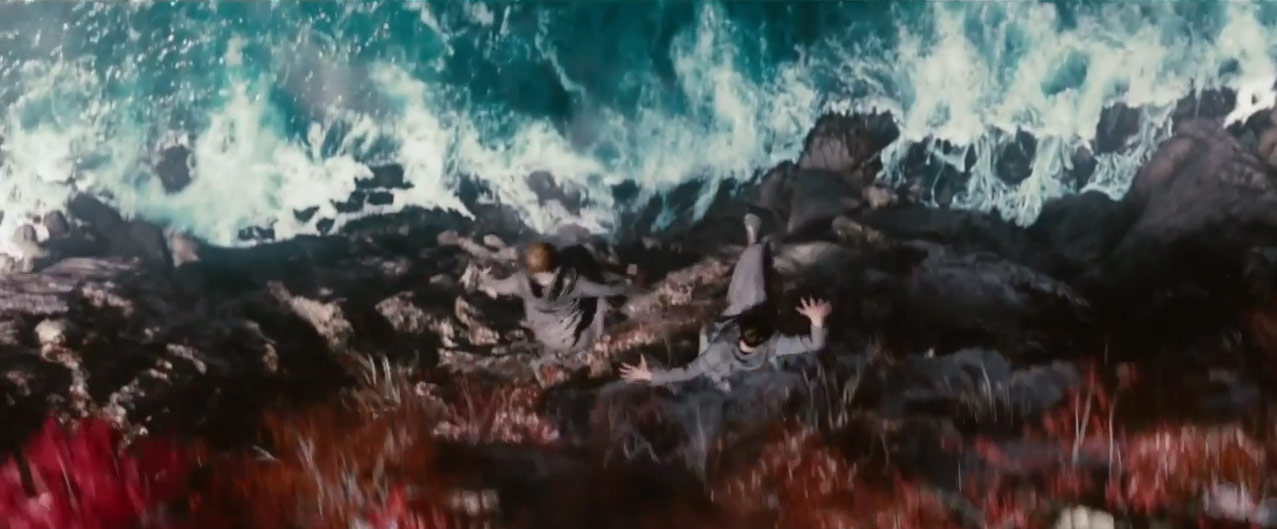'Doomsday Planet' Nibiru Has Cameo in 'Star Trek Into Darkness'

The new "Star Trek" film warped into on Thursday (May 16) and space enthusiasts may find something familiar in the opening scenes of the fictional universe: a made-up planet named Nibiru.
In "Star Trek Into Darkness," the latest installment in the popular science fiction series, Nibiru is the lush, volcanic jungle planet and was featured in the film's trailer (so no spoilers there really), but before its turn in Hollywood, the extraterrestrial name was attached to one of the most popular end-of-world conspiracies last year.
When rumors that the world would end in 2012 became widely circulated last year, one popular contender among doomsday theorists was a supposed planet called Nibiru, which some claimed was set to catastrophically collide with Earth.
There was (and still is) no scientific evidence to support the existence of Nibiru, and NASA even released a statement last year refuting the claims, after the agency was accused of a conspiracy to cover up the Nibiru threat to avoid mass panic. [See Photos from "Star Trek Into Darkness"]
The doomsday theory began in 1976 when Zecharia Sitchin wrote a book called "The Twelfth Planet," which was based on his own unique translation of Sumerian cuneiform, one of the earliest systems of writing. In the book, Sitchin identified a planet, Nibiru, that orbits the sun every 3,600 years. Years later, a self-described psychic named Nancy Lieder announced that aliens had warned her that Nibiru would collide with Earth in 2003.
After 2003 came and went without incident, the Nibiru doomsday projection was moved to 2012, to coincide with the ancient Mayan long-count calendar.
Now, it appears Nibiru is set to make its Hollywood debut.
Get the Space.com Newsletter
Breaking space news, the latest updates on rocket launches, skywatching events and more!
While the "Star Trek" filmmakers did not say where they found inspiration for the film's volcanic planet Nibiru, they shared their enjoyment in creating the fictional worlds for the movie.
"Nothing could be more incredibly exciting and fun for filmmakers than creating other worlds," production designer Scott Chambliss said in a statement. "You get a rare chance to make the unimaginable real."
For Nibiru, Chambliss let his imagination run wild when it came to designing the jungle planet.
"One thing I love about 'Star Trek' is working with so many contrasting environments," Chambliss said. "Nibiru is the antithesis of the Klingon planet and both are completely different from Earth."
Chambliss used his own real-world experiences to inspire the look and feel of Nibiru.
"Everyone wanted the island planet to have a seductive atmosphere, and one thing that I remembered from my travels in Hawaii is what they call 'lipstick bamboo,' which is dark red and otherworldly, so that made me think, what if this planet was all red?" he explained. "There was something wonderful to that, combined with the deep turquoise blue water and white sand. It was not only a striking color palette, but it had that retro vibe which we embrace in our 'Star Trek' storytelling. And then we developed a whole cultural atmosphere around that."
"Star Trek Into Darkness" is directed by J.J. Abrams and stars Chris Pine, Zachary Quinto, Zoe Saldana and Benedict Cumberbatch.
Follow Denise Chow on Twitter @denisechow. Follow us @Spacedotcom, Facebook or Google+. Originally published on SPACE.com.
Join our Space Forums to keep talking space on the latest missions, night sky and more! And if you have a news tip, correction or comment, let us know at: community@space.com.

Denise Chow is a former Space.com staff writer who then worked as assistant managing editor at Live Science before moving to NBC News as a science reporter, where she focuses on general science and climate change. She spent two years with Space.com, writing about rocket launches and covering NASA's final three space shuttle missions, before joining the Live Science team in 2013. A Canadian transplant, Denise has a bachelor's degree from the University of Toronto, and a master's degree in journalism from New York University. At NBC News, Denise covers general science and climate change.









